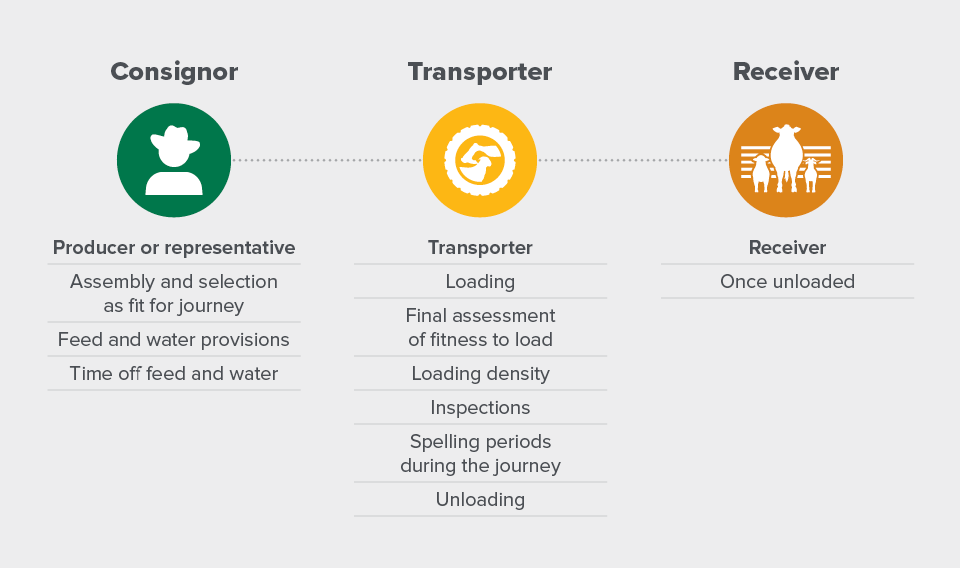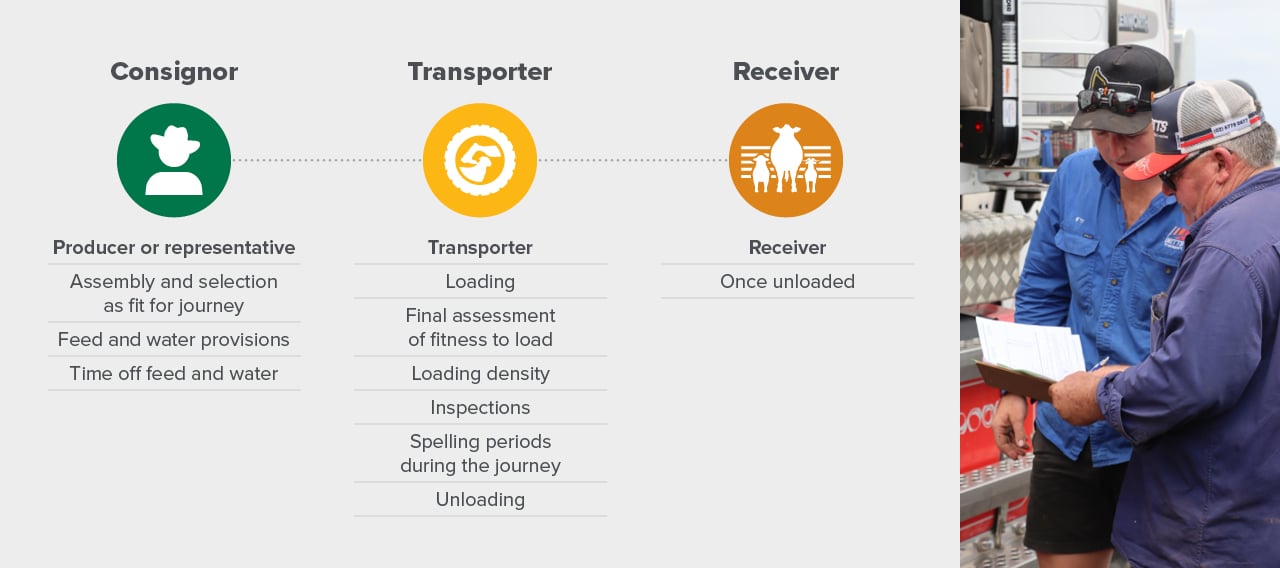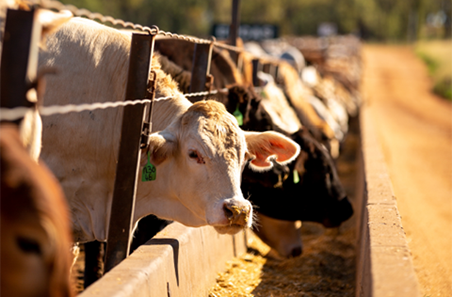
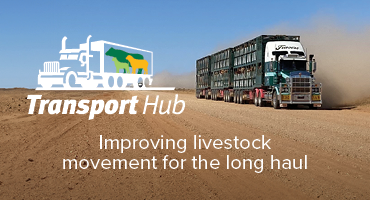

Meat & Livestock Australia’s (MLA) Transport Hub brings together everything you need to know about transporting livestock safely, legally and humanely anywhere in Australia.
Developed in consultation with the livestock and transport industries, the Transport Hub can help you find information on your roles and responsibilities for livestock transport by road whether you’re a producer, transport operator, agent, lot feeder, processor, operating in a saleyard, or elsewhere in the supply chain.
Safe, efficient and humane livestock transport improves outcomes for livestock, boosts profits for the supply chain and facilitates industry sustainability.
For information on transporting other species, visit the Australian Animal Welfare Standards and Guidelines Land Transport of Livestock.
Effective preparation practices for the transport of livestock include:
|
✓ resting recently mustered livestock prior to loading ✓ co-mingling of animals from different mobs well in advance of the journey ✓ recording and communicating the date and times livestock last had access to feed and water ✓ competent selection of livestock prior to loading ✓ performing husbandry practices well in advance of the journey ✓ planning the journey with consideration given to the length of the journey and weather conditions ✓ utilisation of appropriate loading facilities that are fit for purpose ✓ knowing who to contact in case of an emergency. |
LivestockASSIST
This is a 24-hour national hotline to coordinate emergency responses to incidents involving heavy vehicles carrying livestock.
The national number is 1800 4 ALRTA (or 1800 425 782).
Note: The hotline is free for all livestock transporters or anyone else at the scene of an incident.
Industry vision
By 2028, all players in the Australian livestock industry will know and act on their livestock transport responsibilities to achieve world-class outcomes for livestock and supply chain partners, with data to back it up.
Knowing your responsibilities
Under Australian law, there is a chain of responsibility for livestock welfare that needs to be adhered to. In the chain of responsibility, the producer, or their representative, is the consignor.
The chain of responsibility for livestock welfare in the transport process includes:
Top 10 transport tips
1. Prepare the yards: Make sure trucks can safely access the property and yards and have adequate space to back up to the loading ramp. Also ensure yards, races, gates and loading ramps are well maintained and consider best practice yard design for safety and efficiency.
2. Prepare the livestock: Ensure all livestock are fit to load for the intended journey – if in doubt, leave them out. Don’t run them in from the paddock as the truck is backing in to load – rested livestock with access to good quality dry hay and clean water travel best.
3. Plan the journey with your transporter: Think about the class of livestock, weather conditions and length of their intended journey whether you are transporting cattle, sheep or goats.
4. Communicate clearly: Ensure you convey the date and time of loading, property address, yard location, contact phone numbers, correct weights, numbers and types of livestock to make sure the right truck is sent with enough space to load the number of livestock you wish to consign.
5. Chain of responsibility: Know your roles and responsibilities and make sure livestock are prepared well for the intended journey (see above).
6. Use a professional livestock carrier: Remember the driver has the final say and carries responsibility for what can go on the truck.
7. Documentation: have all your paperwork ready, for example National Vendor Declarations (NVDs) and other necessary documentation. The electronic National Vendor Declaration (eNVD) app is a mobile, offline solution for livestock consignments.
8. Avoid loading and moving in extreme weather: It is very important to stay in close contact with your transport operator in the event of weather warnings at the scheduled time of loading. Weather can impact truck access and animal welfare.
9. Be patient with loading: Low stress livestock handling and loading is better for livestock and people as well as more efficient and effective.
10. Mutual respect: Achieving a good transport outcome is a team effort with all parties working cooperatively towards a common goal – getting livestock safely to their destination in the best possible condition.
Fit to load checklistBefore livestock are loaded, ensure you complete this checklist. Remember, it’s your responsibility to ensure animals are fit to load and fit for the intended journey ahead of loading. The animal:
Note: If the animal was grazed on lush green pasture, ensure it was removed from the paddock well in advance of loading and provided with access to adequate roughage (where possible). Make sure the animals are prepared in the best way possible, noting water curfew is very important when transporting goats. Ensure paperwork is completed and facilities are safe, operational and ready for when the truck arrives to load your consignment. |
Time off water and spelling periods
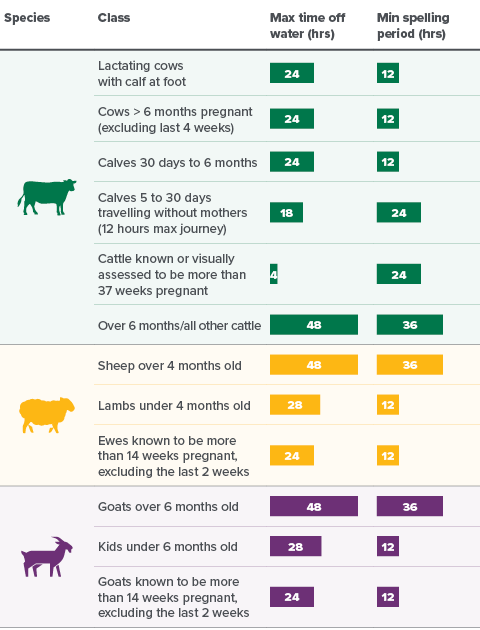
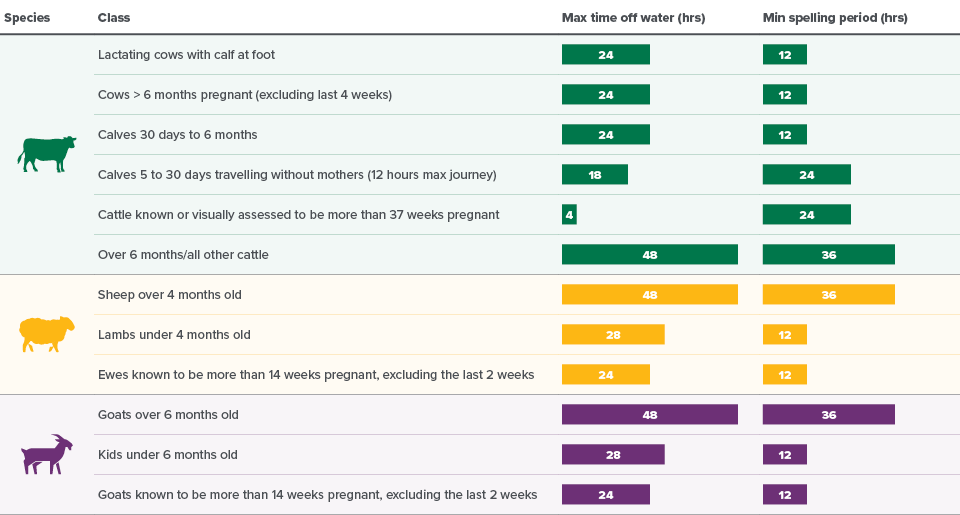
Loading densities table
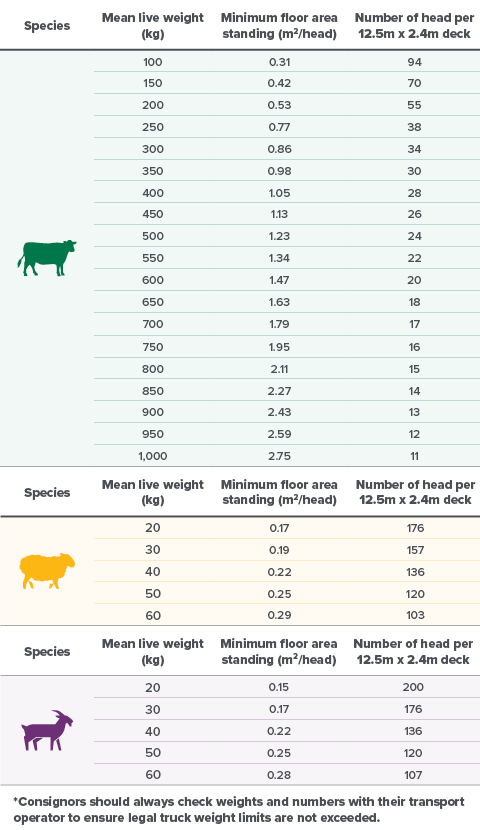
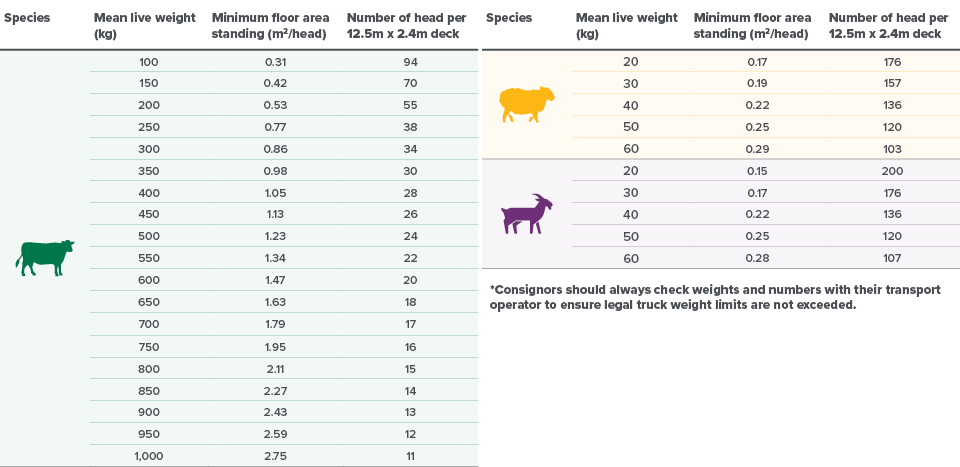
Information tailored to you
Everyone in the red meat supply chain plays a role in safe, humane livestock transport. Find information below to help you play your part.
Case studies
On the ground and on the road – hear from those involved in a wide range of roles within the livestock transport industry.





